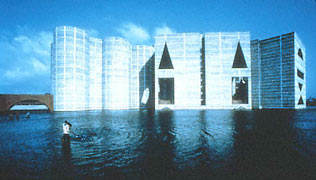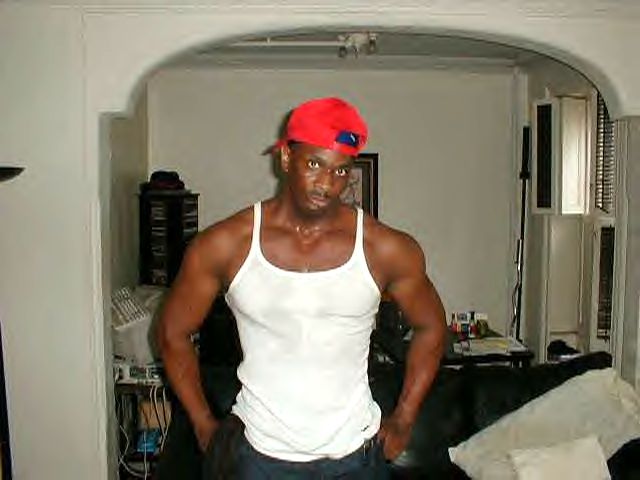Lens: Kahn's National Assembly

Dacca, Bangladesh: National Assembly Building
Architect: Louis I. Kahn
"It was not belief, not design, not pattern, but the essence from which an institution could emerge."
That's how architect Louis I. Kahn (1901 - 1974) described his landmark National Assembly in Dacca, the capitol of Bangladesh. As you can see above, the building is a masterpiece. The congress appears to soar out of the water and hover, like some space-age city of the future.
But in fact the Bengali assembly is not futuristic; it was created in the sixties, from 1962-1974, at the tail end of the modernist era . The post-modernist detail and monolithic scope of the project convey an era of futurism that few contemporary projects rival.
Kahn's projects always scream drama, like the Salk Institute at La Jolla CA or the Institute of Public Administration at Ahmedabad, India. Each are dramatic, imposing monoliths that are severe contrasts to otherwise stark surroundings. Also interesting: incorporating water features as essential elements.

The gigantic reflecting pool (close-up above) surrounding the National Assembly is more than simple aesthetics. Certainly the reflection provides a tranquil and poetic element; but it's recreational and functional. People can kick their feet in the waters, wade or even bathe; Kahn's theory was that great buildings should bring citizens together, not separate them.
Kahn died in 1974, the year his masterpiece was finalized. The circumstances of his death were apalling. He was broke and alone, and his body was discovered in a Pennsylvania public bathroom ... three days later.
The Academy Award-nominated 2003 documentary My Architect: A Son's Journey re-considers his life, and death. It was written and directed by Kahn's son, who never knew his father. Nathaniel Kahn interviews friends and colleagues, while visiting each of his father's creations. I saw the film two years ago at the Film Center, and was amazed by the long line of moviegoers. Like me, they were searching for simplicity, purpose and meaning through Kahn's vision. None of us were disappointed.
Louis I. Kahn: Great Buildings
My Architect: A Son's Journey



